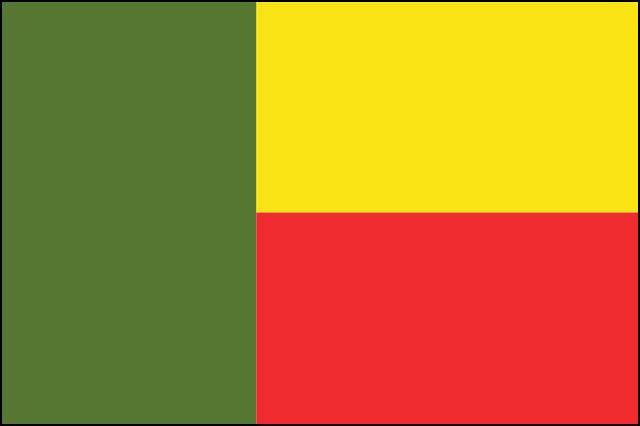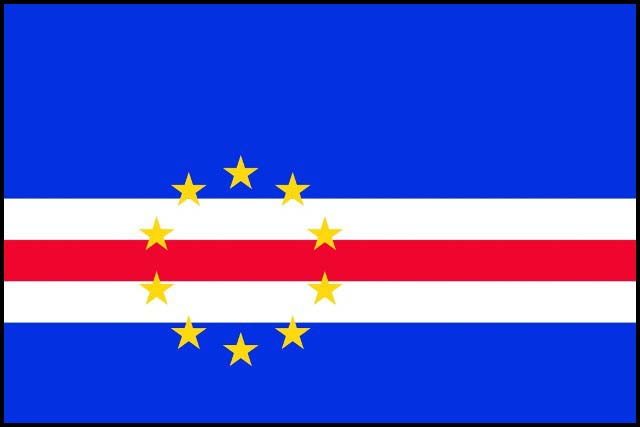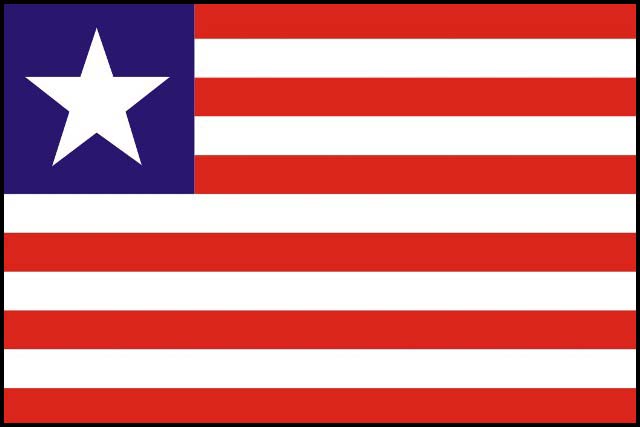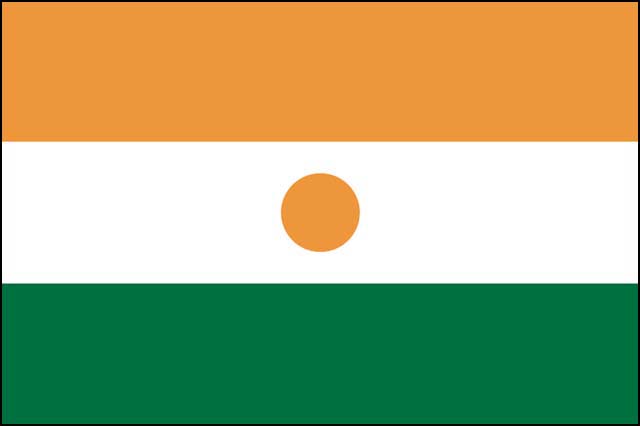Mali
Overview of the country
Surface area: 1,240,190 km² (two and a half times the size of France)
The Republic of Mali is located in the heart of West Africa, having inherited from colonisation, according to an historian’s image, «the shape of a butterfly with asymmetrical wings».
Mali extends from the heart of the Sahara in the north, to the limit of the large savannah zone in the south.
Mali shares 7,420 km of border with seven neighboring states: Algeria to the north, Niger to the east, Burkina Faso, Ivory Coast and Guinea to the south, Senegal and Mauritania to the west. Mali has no access to the sea and the ports of Dakar and Abidjan, through which most of its international traffic passes, are about 1,200 km from Bamako.
Highest point: Hombori Tondo (1,155 m) located in the central part of the country.
Relief: 90% of Mali is made up of vast plains and low plateaus, the altitude of which does not exceed 300 m. Some mountainous massifs stand in the middle of these flat expanses, such as the Monts Mandingo, the Adrar des Iforas and the Bandiagara cliff.
The distribution of the population within the Malian territory is deeply marked by the bioclimatic conditions.
The hydrographic network is structured around the watersheds of two rivers, both located in the southern part of the territory, Senegal and Niger. They provide an essential part of transportation. However, these do not flow permanently: the Niger is navigable six months a year, between July and January. It forms a 1,700 km long loop at the top of which it splits into multiple arms forming a real “inland delta”. Its tributaries drain the southwest and the northeast of the country. This zone constitutes a territory of 50,000 km ², that is approximately 6% of the total surface area of the country. The Niger River occupies a preponderant place in the economy, development and spatial organization of the country.
Political, economic and social context of the country
- Political context
The country is divided into 10 administrative regions and a District, sixty (60) Circles, three hundred and thirty (330) districts and seven hundred and three (703) municipalities, of which ninety-six (96) are urban.
- average annual growth rate of 3.6%;
- total population in 2019: 19,864,061 inhabitants and in 2020: 20,913,000 inhabitants, 71% of whom are rural.
It is very young with 49% under 15 years old. The primary school enrollment rate remains low with 54% of children attending school.
Many ethnic groups live together: Bambara (35%), Peuhl (12%), Touareg and Maure, Senoufo, Sarakolé, Songhaï, Malinké, Bobo, Minianka, Toucouleur, Somonono, Bozo, Dogon, etc.
The country is experiencing a strong emigration, particularly to France, of Sarakolé populations from the Kayes region.
Density: 9.6 inhabitants / km2, one of the lowest in the world.
Capital city : Bamako
Languages: French is the official language but Bambara is much more used (around 60% of the population). A few other African languages (Fulani, Senufo, Soninke, Tamasheq, Sonrhaï, Dogon ...) share the rest.
Religion: About 85% of the Mali’s population is of Muslim religion, 8% are animists, 5% are Christians, but traces of animism exist among most of the inhabitants.
National holiday: September 22 (independence, in 1960)
Currency: The CFA franc, 1 € = 655 CFA francs
GDP 2005: $370 / capita, above the hundredth rank in the world
President of the Republic: Ibrahim Boubacar KEITA
Prime Minister: Dr Boubou CISSE
Membership to sub-regional and regional organizations: Surrounded by seven neighbors (Algeria, Mauritania, Burkina-Faso, Côte d’Ivoire, Guinea, Senegal, Niger), Mali has developed a diplomacy promoting regional and continental integration. Founding member of the West African Economic and Monetary Union (WAEMU) and of the Economic Community of West African States (ECOWAS), it was the first country to ratify the Constitutive Act of the African Union in 2000. It is also a member of the implementation committee of the New Partnership for Africa's Development (NEPAD), of the Community of Sahel-Saharan States (CEN-SAD) and of the G5 Sahel. Mali is an active member of the Francophonie, which it considers as an important instrument of its diplomacy.
.
- Economic context
In 2019 Mali recorded a growth of 5% (driven by good gold and cotton production), a budget deficit of 3.1% of the GDP and an inflation of 0.4%. ... on the demand side, investment is particularly low ; 9.5% of the GDP for the private sector and 8.7% for the public sector.
In 2019, Mali has a GDP (gross domestic product or national income) per capita of 934 dollars, or a gross domestic product of 17.83 billion dollars for 20 million inhabitants. Also, the Human Development Index (HDI) established in 2019 by the United Nations ranks Mali 182nd out of 188 countries according to the World Bank.
The rate of extreme poverty fell slightly from 43.4% to 41.3% between 2017 and 2019, helped by the exceptional agricultural production of the last three years. It should also be noted that the incidence of poverty is much lower in urban areas, with 90% of the poor being concentrated in rural areas in the south of the country, where the population density is the highest.
Mali's macroeconomic performance is favourable in 2019. The economic growth rate remains high in 2019, around 5%, despite a decline of 0.3 percentage point compared to 2018 (5.3).
Agricultural growth and poverty reduction are closely linked as the primary sector employs around 80% of the working population, provides nearly 20% of export revenues and contributes 32.2% to Mali's Gross Domestic Product (GDP) in 2017, broken down as follows: subsistence farming (12%), cotton (2.6%), animal husbandry (12.4%), fishing (2.6%), forestry (2.2%).
Mali's trade with the rest of the world shows a trade deficit of 243 billion FCFA in the 1st quarter of 2019, induced by exports which stood at 441.93 billion FCFA against 684.94 billion FCFA for imports.
- Social context
In 2019, Mali has a GDP per capita of 934 dollars, or a gross domestic product of 17.83 billion dollars for 20 million inhabitants. The rate of the population living below the poverty limit reaches 41.1% in 2019, according to the latest data recorded by the World Bank.
The incidence of poverty in 2017 is 44.9% compared to 47.2% in 2015, making a decrease of 2.3 percentage points.
The inequality as measured by the Gini index overall is 0.34 in 2017.
The Human Development Index (HDI) shows weak growth from 0.40 to 0.43 between 2010 and 2017.
According to United Nations forecasts, it will change very little to reach 0.44 in 2020. Adjusted to inequalities,
the index is only 0.27 in 2017, making Mali a country where human development is low and inequalities strong.
Malnutrition is a major public health issue in Mali. About one in five children (27%) is stunted or chronically malnourished, 9% of children 0-59 months suffer from acute malnutrition, 19% are underweight and 2% are overweight, and more than four in five (82%) are anaemic, and more than one in two women suffers from anaemia (63%) (EDS 2018).
According to the Sixth Demographic Health Survey in Mali (EDSM VI), 63% of women aged 15 to 49 suffer from anemia: 42% in the mild form, 20% in the moderate form and 2% in the severe form. The prevalence of anaemia among women is higher in rural areas (67%) than in urban areas (52%). According to the same survey, low birth weight affects 15% of children; 27% of children under five are stunted (EDSM VI) and 10% are severely stunted while 82% have anaemia.
In Mali, the results of the study on Cost of Hunger indicate that malnutrition costs around 265 billion FCFA per year, or 4.06% of its Gross Domestic Product.
Today, the nutritional situation in Mali is improving and is better than that of other countries in the sub-region (chronic malnutrition with a rate of 27% in Mali compared to 47.8% in Niger or 31.9% in Chad). However, the situation remains worrying and the conflict calls into question certain achievements, with a significant impact on nutritional security and food security, poverty and access to basic social services (health, water and sanitation, etc.). Certain regions in the center and in the south, for example, large production areas, experience high rates of chronic and acute malnutrition and these indicators present a significant risk of deterioration, due to problems of reduced access to food, basic social services, and above all to dietary diversity among the poorest households, etc.
Agro-sylvo-pastoral and fishery sector
The Malian economy is mainly based on the rural sector, whose activities are strongly influenced by the vagaries of the climate.
The agricultural sector, the backbone of the Malian economy, employs nearly 80% of the country's working population and contributes significantly to the creation of the national wealth (over 30% of the GDP).
The agricultural population is 16,833,767, of which 8,143,585 are women (EAC 2018).
In the agricultural field, Mali has great potential (land, surface water, groundwater, large livestock, fish and aquaculture resources, oases and wadis, high demands for products, sun, wind, human resources, national and sub-regional markets. , etc.), the enhancement of which will help create employments and wealth, significantly reduce poverty and contribute to the socio-political stability of the country.
They are characterized among other things by :
- a great agroecological diversity resulting in agricultural production systems ranging from cotton-based systems in the south to oasian systems in the far north, including dry cereal-based systems and pastoral systems (semi-sedentary or transhumant).
- Considerable potential in agricultural lands: Of the 43.7 million ha that can be used for agriculture and breeding, only 7 million ha (4.5%) are cultivated, of which less than 300,000 ha benefit from sources other than rainwater, with more than 200,000 ha irrigated with total water control.
- Significant water resources: The Niger and Senegal rivers and their tributaries drain an average of 70 billion m3 of water per year and offer an irrigable potential estimated at more than 2.2 million ha. The Inner Niger Delta extends over more than 30,000 km² and is one of the great ecological wealth of the country, and even of West Africa.
- Groundwater resources are estimated at 2,720 billion m³ with an estimated replenishment rate of 66 billion m³/year.
- a considerable potential aquaculture development, with 5,500 inventoried sites covering 895,000 ha including 620,500 ha of lowlands, ponds and plains; the level of development of this potential remains very low. The potential for fish production is over 200,000 tonnes per year.
- a significant forest potential: The forest estate covers approximately 100 million ha, on which only 21 million (or 17% of the national territory) have real production. The potential for natural regeneration is estimated at 7 million tonnes per year.
- the fauna is important and diversified, although poorly protected. A significant wildlife potential, particularly in the Baoulé, Wassoulou and Gourma areas.
- the potential for fish production is over 200,000 tonnes per year and there are 895,000 ha of land available for aquaculture (Source: MEP, DNP). Inland fishing constitutes another significant agricultural production system, practiced by migrant fishermen located along the main rivers (Niger, Senegal) and in lake areas (Débo, Télé, Faguibine and Fati) and sedentary fishermen practicing along the affluents of Niger and Senegal, mainly at the level of the reservoirs of the Sélingué and Manantali dams. As a recent activity, there is an intensification of fish farming around urban centers and through the development of communal artisanal fish farming and aquaculture. The annual fish production comes mainly from the Inner Niger Delta (Mopti) which is also an important spawning area. With the droughts and the decrease in river flows, fishing activities are increasingly associated with agriculture or handicrafts.
- abundant and diversified animal resources: The pasture areas are estimated at more than 30 million ha on which only about 1/3 is exploited mainly because of insufficient access to water and various losses , in particular by trampling, by fires and by the effects of the rangeland erosion. The Malian livestock is one of the largest in the sub-region. It is estimated at 11,758,377 cattle, 18,270,000 sheep, 25,224,990 goats, 1,216,758 camels and 47,254,830 poultry (DNPIA, 2018). This animal potential constitutes an important source of protein and income in rural areas. Modern farming is located around large urban centers. In terms of genetic diversity, Mali has many breeds of cattle, sheep, goats and camels, indigenous, perfectly adapted to the environment. The livestock systems are: i) of the extensive nomadic type, sometimes associated with oasis agriculture in the far north; ii) of an extensive transhumant type in the North, West and Center of the country; iii) semi-sedentary and sedentary in the center and in the south.
Additional information
Definitive cereal productions for 2018-2019 have been estimated at 10,159,539 tonnes, including 9,057,077 tonnes for the traditional sector (89%) and 1,102,463 tonnes (11%) for the Rice Offices and Agencies (modern sector).
The rate of achievement of production targets is 100.8%; productions are up 9.3% compared to the previous campaign.
The 2018/2019 total cereal production is composed mainly of maize (35.68%) and rice (31.17%), accounting for around 67% of the total cereal production. Millet and sorghum represent 18.11% and 14.46% respectively. (Source: CPS-SDR; EAC 2018-2019).
Compared to the previous agricultural season, the productions of the main cereals are as follows:
- 3,184,725 tonnes of rice compared to 2,707,557 tonnes in 2017-2018, an increase of 17.62%;
- 3,994,493 tonnes of maize against 3,598,205 tonnes in 2017-2018, an increase of 11.01%;
- 1,773,082 tonnes of millet against 1,492,650 tonnes in 2017-2018, a decrease of 18.79%;
- 1,443,385 tonnes of sorghum against 1,423,358 tonnes in 2017-2018, an increase of 1.41%;
- 28,150 tonnes of fonio compared to 46,189 tonnes in 2017-2018, a decrease of 39.05%;
- 29,145 tonnes of wheat against 28,015 tonnes in 2017-2018, an increase of 4.03%.
Cereal availability per capita estimated at 473.36 kg / hbt / year compared to a forecast of 439.69 kg / hbt / year the previous season for a standard of 214 kg / hbt / year.
The surface areas cultivated with cotton during the agricultural season are:
697,771 ha in 2018-2019 compared to 629,753 ha in 2017-2018, an increase of 10.8%.
The productions realized during the Agricultural campaign are:
700,300 tonnes in 2018-2019 compared to 620,200 tonnes in 2017-2018, an increase of 11.43%.
The 2018-2019 campaign was part of a dynamic of increasing the production and productivity of seed cotton, as well as improving its quality and that of cotton fiber.














